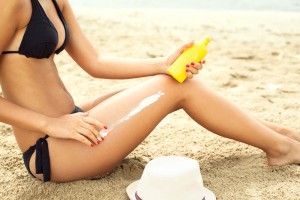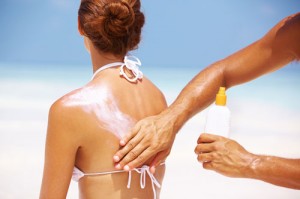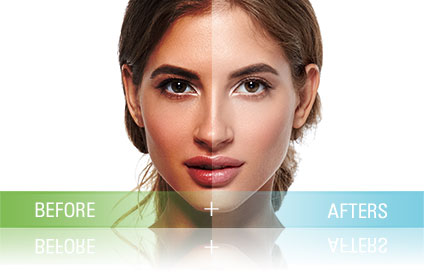 The weather is warming up and it is definitely beach weather! It’s great to head to the beach, but it is important to be sun safe. Everyone should be sure to apply a sunscreen daily, you can actually have more exposure to UV rays on overcast days. Didn’t know that? Good fact to know and be aware of when you step out of your home each day.
The weather is warming up and it is definitely beach weather! It’s great to head to the beach, but it is important to be sun safe. Everyone should be sure to apply a sunscreen daily, you can actually have more exposure to UV rays on overcast days. Didn’t know that? Good fact to know and be aware of when you step out of your home each day.
Here at The Derm Institute we want to keep our patients aware and up to date on the information they need to know regarding their sun safety.
Sunscreen Choosing Tips:
- Choose a sunscreen that you will use over and over again. Make sure you like the feel,
that it is not too heavy or pasty, there are many elegant formulations on the market, so find one you love! - Select a sunscreen that offers broad-spectrum protection (look for both UVA AND UVB protection on the package)
- Look for a minimum of SPF 30 or greater
- Find a water resistant sunscreen if you will be outdoors to combat sweat and water
- Cream sunscreens are best for dry skin and the face area
- Gel sunscreens should be used for hairy areas, like the scalp or even a male chest
- Stick sunscreens are good for around the eye area
- Spray sunscreens are best used for REAPPLICATION, as the coverage from a spray is not protective due to scatter of active ingredients
- Use a powder based sunscreen like Colorescience Sunforgettable SPF 50 Sunscreen Powder for reapplication every 2-3 hours
- Has a minimum SPF of 30, and is also water resistant.
Sunscreen FAQs
1. Is the higher the SPF better?
Dr. Chiu and the American Academy of Dermatology recommend a SPF of at least 30 or above, as it will block about 97% of harmful UV rays. But SPFs higher than 50 do not offer more significant coverage, so products with SPF 100 are not necessary, nor do they block 100% of rays.
2. What sort of sunscreen should I use on my child or baby?
It is best for babies that are under 6 months to not spend time directly in the sun, if necessary, sunprotective clothing can be used to protect the delicate and sensitive skin of an infant. It is also recommended to have babies at this young age to wear sunglasses and a wide brimmed hat; especially if they are to be outside in direct sunlight for a prolonged period of time.

At the age of 2, sunscreens of all types are safe for use.
3. How much should I apply?
The general rule is a golf ball size for the entire body. This includes about half a tablespoon for your face. And don’t forget to toss out last year’s expired sunscreens!
At TDI, we recommend using sunscreens generously, daily, and reapply. We carry all the sunscreens mentioned in this article. If you need guidance on what’s best, please be sure to stop by The Derm Institute to take a look at our sunscreen selection, and any one of our staff members will be happy to help you! Let us help you be sun safe and sun smart!
. . . Shared by the TDI team








